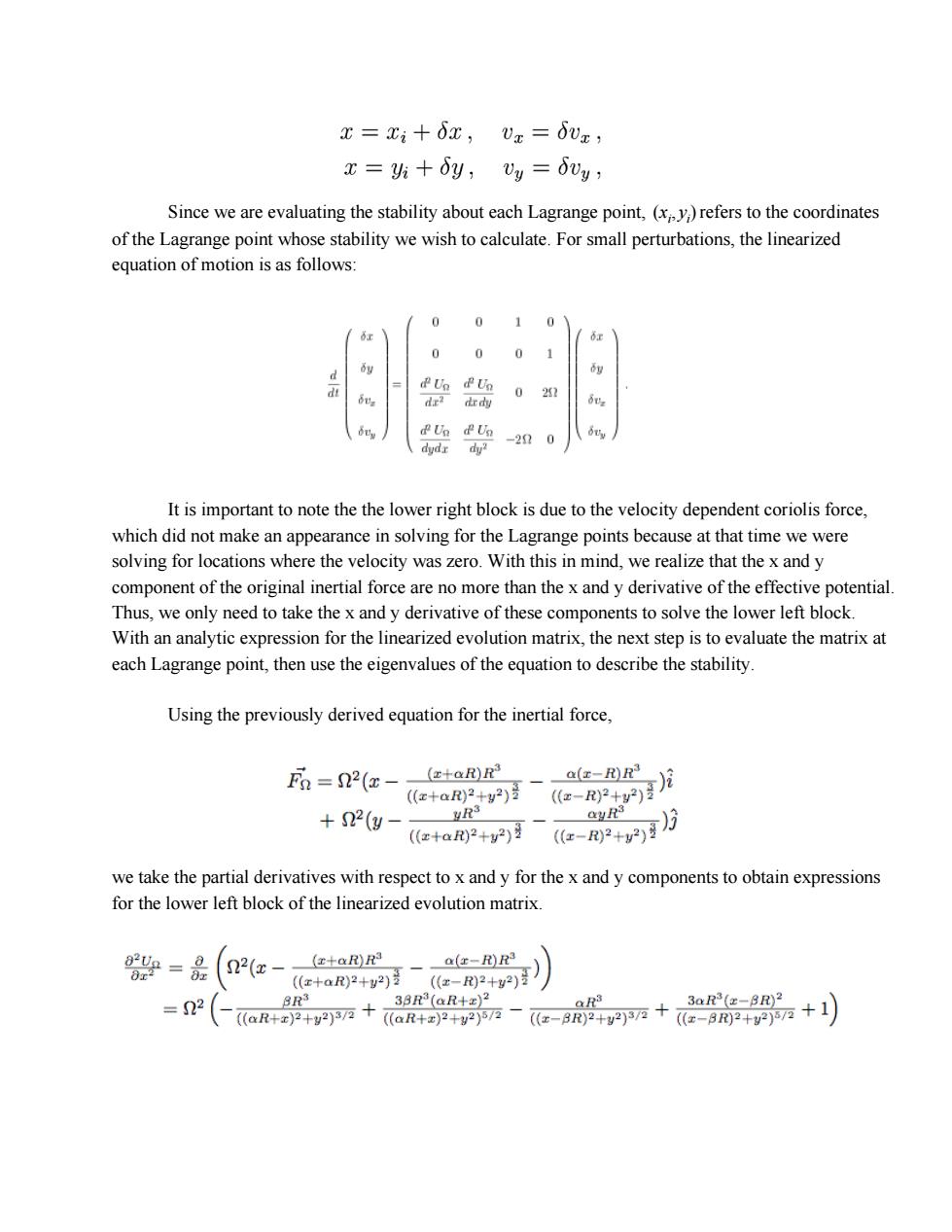正在加载图片...

x=xi+6x,Ux=OVx, x=Vi+oy,vy=ovy, Since we are evaluating the stability about each Lagrange point,(x)refers to the coordinates of the Lagrange point whose stability we wish to calculate.For small perturbations,the linearized equation of motion is as follows: 0 0 0 0 0 d dVa dUa dr2 0 251 血的 6 PUa U dy? -20 0 dudr It is important to note the the lower right block is due to the velocity dependent coriolis force, which did not make an appearance in solving for the Lagrange points because at that time we were solving for locations where the velocity was zero.With this in mind,we realize that the x and y component of the original inertial force are no more than the x and y derivative of the effective potential. Thus,we only need to take the x and y derivative of these components to solve the lower left block. With an analytic expression for the linearized evolution matrix,the next step is to evaluate the matrix at each Lagrange point,then use the eigenvalues of the equation to describe the stability. Using the previously derived equation for the inertial force, Fo=02(-(ctaR)R a(-R)R (x+aR)2+y2) e-月 +22(y- c-0+vg月 ayR3 (x+aR2+y2) we take the partial derivatives with respect to x and y for the x and y components to obtain expressions for the lower left block of the linearized evolution matrix 品 Q2(x-(EtaRR a(r-R)R +o2+9G-m24) =22 BR3 38R3(aR+z)2 aR+2P+y)7十(aR+品+n- aR3 3aR3(z-BR)2 2-8P+vn+(-9+n+1Since we are evaluating the stability about each Lagrange point, (x , )refers to the coordinates i yi of the Lagrange point whose stability we wish to calculate. For small perturbations, the linearized equation of motion is as follows: It is important to note the the lower right block is due to the velocity dependent coriolis force, which did not make an appearance in solving for the Lagrange points because at that time we were solving for locations where the velocity was zero. With this in mind, we realize that the x and y component of the original inertial force are no more than the x and y derivative of the effective potential. Thus, we only need to take the x and y derivative of these components to solve the lower left block. With an analytic expression for the linearized evolution matrix, the next step is to evaluate the matrix at each Lagrange point, then use the eigenvalues of the equation to describe the stability. Using the previously derived equation for the inertial force, we take the partial derivatives with respect to x and y for the x and y components to obtain expressions for the lower left block of the linearized evolution matrix